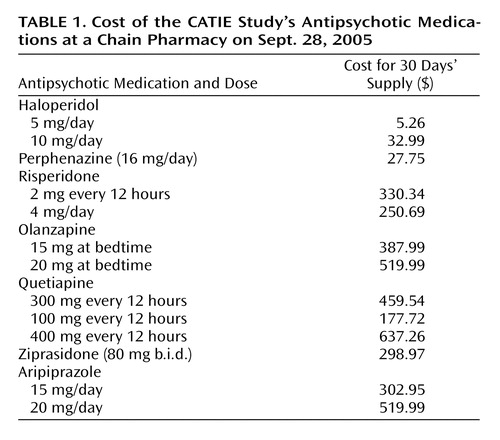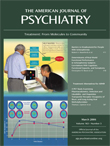To the Editor:
As reported in the CATIE study, atypical antipsychotics account for more than 90% of the market share. We did a cost comparison of 1 month’s supply of the various antipsychotic drugs in the study on the online purchase site of a chain pharmacy to check for most recent prices (Table 1). The prices were checked on Sept. 28, 2005. This particular pharmacy was chosen because a majority of the patients we see fill their prescriptions there.
The cost of “typical” antipsychotics (haloperidol and perphenazine) is just a fraction of that of atypical antipsychotics. Typical antipsychotics have been shown to be as effective as quetiapine, risperidone, and ziprasidone in the CATIE study. Based on the study findings and the cost comparison, we contend that the cheaper, more effective typical antipsychotics should have been considered in patients not able to afford the costlier atypical antipsychotics. But this should have been done as stated in the editorial on the basis of clinical judgment and informed patient preference (1).
 |
1. Freedman R: The choice of antipsychotic drugs for schizophrenia (editorial). N Engl J Med 2005; 353:1286–1288Crossref, Medline, Google Scholar



